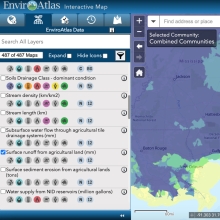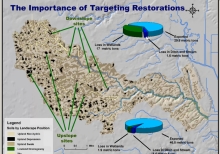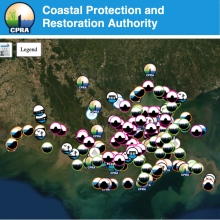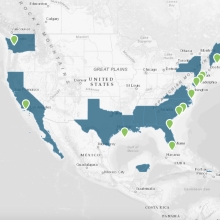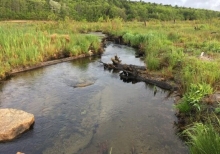Wetlands contribute to the national and local economies by producing resources, enabling recreational activities and providing other benefits, such as pollution control and flood protection. While it can be difficult to calculate the economic value provided by a single wetland, it is possible to evaluate the range of services provided by all wetlands and assign a dollar value. These amounts can be impressive. According to one assessment of natural ecosystems, the dollar value of wetlands worldwide was estimated to be $14.9 trillion. (Source: Costanza et al.


